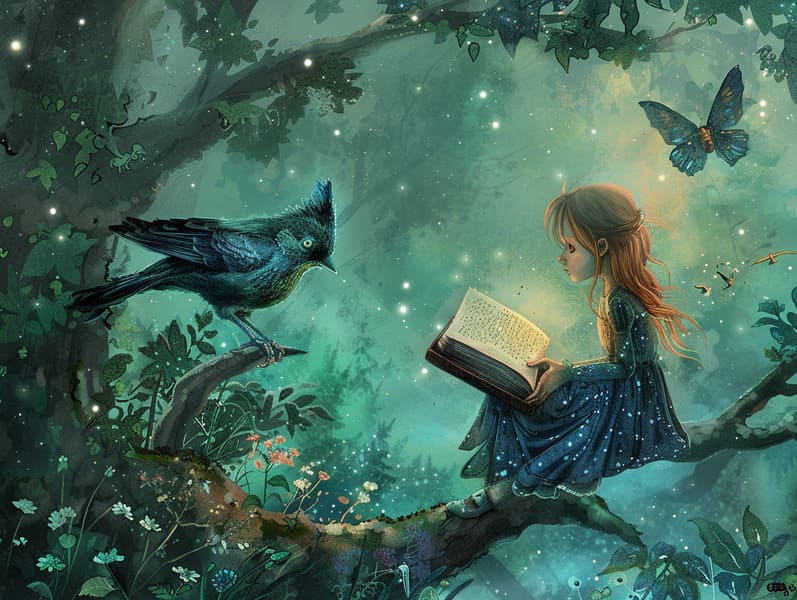The Creation of Popular Fairy Tales and the Unfading Magic.
The Creation of Popular Fairy Tales and the Unfading Magic.
Blog Article

Fairy tales have old origins. These narratives have been relayed from one generation to the next long before they were ever put on paper. They sprang from a variety of civilizations, including Indigenous traditions. They were initially disseminated among elders, often carrying themes and messages aligned with the societal norms and beliefs of the time.
The renowned Brothers Grimm, Jacob and Wilhelm (the Grimm brothers), were among the first to gather many of these beloved tales. Their anthology, "Grimm's Folk Tales," included stories like "Ashenputtel," "Hansel and Grethel," and "Snow White," which have since become essentials in the world of children's fairy tales. Similarly, Andersen's delightful fairy tales, such as "The Story of the Little Mermaid," and "The Little Duckling," have won hearts worldwide, guaranteeing their place in the pantheon of treasured fairy tales.
Though they are centuries old, fairy tales remain as applicable as ever, especially as nighttime stories for kids. These whimsical stories are now available in diverse formats, including artistically illustrated books, enchanting animations, and online storybooks.
Their unwavering allure can be linked to several charming aspects:
Crucial Morals: Ancient fairy tales often offer important moral lessons. Narratives like "The Tale of the Boy Who Cried Wolf" teach the importance of honesty, while "The Race of the Tortoise and the Hare" illustrate the values of perseverance and humbleness. These stories offer kids clear distinctions between truth and falsehood, developing their moral compass in a tender yet impactful way.
Empathy and Awareness: Traditional fairy tales frequently involve protagonists facing challenges and struggles, prompting readers to sympathize with their struggles and root for their triumphs. For instance, "The Story of Beauty and the Beast" reveals the benefit of seeing beyond the surface to realize the inner spirit of a individual, fostering insight and understanding.
Cultural Perception: Many fairy tales are deeply embedded in the cultural contexts from which they emerged. Delving into these tales can provide delightful insights into different societies, fostering a sense of cultural insight and perception.
Imagination and Innovation: The mythical elements in timeless fairy tales—mythical creatures—foster children’s visions. These fairy tales lead readers to fantasy realms, awakening innovative ideas and a sense of amazement that stays a lifetime.
Classic fairy tales are not only mesmerizing but also didactic. They provide entrancing tools in building various intellectual and emotional capacities in little ones. When classic fairy tales are told out loud, they enhance language proficiency by teaching new terms and complex sentence structures. This practice also fosters auditory skills and mindfulness, as young readers pay close attention, expectant to see what happens next.
Furthermore, talking about the themes and characters of traditional fairy tales can develop critical thinking and intellectual skills. Young readers are taught to notice patterns, make predictions, and comprehend cause and effect. These examinations also benefit children communicate their thoughts and feelings, promoting their emotional intelligence.
In today’s digital age, the presence of digital fairy tales has made these tales more obtainable than ever. Online resources and web apps make available ample collections of traditional fairy tales that can be perused or heard anytime, anywhere. Fairy tales recited are particularly liked, sharing an interactive method for kids to engage with these whimsical stories. Audio stories and read-aloud videos bring characters and settings to life, often augmented by charming melodies and soundtracks that enrich the narrative journey.
The unfading fascination of classic fairy tales lies in their ability to transform to modern here days while preserving their core values. Contemporary revisions of these narratives often incorporate more diverse protagonists and modern settings, making them familiar to today’s audience. However, the key lessons of valour, sympathy, and rightness remain unchanged, continuing to strike a chord with audiences of all ages.
Classic fairy tales also offer a sense of calm and knownness. They make available a orderly narrative with a unmistakable beginning, middle, and end, often finishing with the settlement of conflicts and the triumph of honesty over deceit. This steadiness can be solacing for children, making known a sense of reliability in an unstable world.
Old fairy tales continue to spellbind and enlighten new generations, maintaining their fascination and relevance in modern society. As nighttime stories for kids, they provide a perfect blend of magic and knowledge, nurturing moral values, empathy, and creativity. The existence of online fairy tales and the well-received status of fairy tales narrated secure that these traditional tales remain within reach to new generations.
By retaining and making known these fairy tales, we continue to admire the rich tapestry of fables and cultural heritage. Whether you are experiencing a artistically illustrated book, browsing a cyber library, or hearing an audio story, the grace of Grimm's fairy tales is always within reach. These fairy tales show us of the invariable nature of fairy tales and its ability to link us across eras and regions.
If you are exploring a richly illustrated book, accessing a electronic library, or listening to an voice book, the elegance of classic fairy tales is always within reach.
These narratives highlight of the timeless strength of fairy tales and its ability to join us across epochs and places, establishing a link that fascinates and enlightens alike.